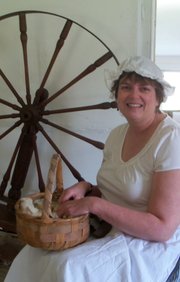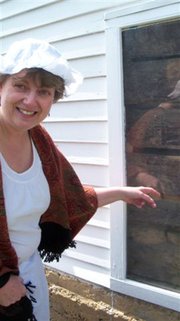Twenty-five years or so before the Revolutionary War began, an English immigrant homesteaded in what is now Arlington’s Glen Carlin community. His name was John Ball and the small cabin he built, to house the family of wife Elizabeth and their five daughters, still stands.
Today, the home is owned by the Arlington Historical Society and called Ball-Sellers House. The additional name honors Marian Rhinehart Sellers who donated the plot in 1975 so that it might be preserved and open to the public.
John Ball died in 1766 and the property passed to William Carlin, a prominent tailor in Alexandria whose customer list included George Washington and George Mason. Three Carlin generations held the title, and one added an adjoining “new” residence in 1880. Sold a few years thereafter, the area became subdivided and known as Glen Carlin.
The Arlington Historical Society embraces the goals of the gift: Preservation and public access. Not operated by mere well-intentioned amateurs, a wife-husband team of Annette and Mark Benbow bring to bear university degrees in history, as well as a shared love of things historical. Annette Benbow is the hands-on director of Ball Sellers House. Mark Benbow, in addition to being an assistant professor of history at Marymount University, oversees both museums operated by the Arlington Historical Society. Margaret Wagner is the resident a caretaker.
Annette Benbow insists that everything achieved is due to the dozen-or-so volunteers who bring passion to their efforts. She also compliments the neighbors “who are very protective of the house and grounds.”
Asked about reactions of visitors, Annette Benbow sees a wide range. Younger children “find it hard to envision living without electric lighting and such conveniences.” Teenagers question how “people had a social life and some fun.” Nearly all have difficulty grasping that the middle of Arlington was “once a frontier.” Visitors of all ages also express “surprise at how sparse were family belongings, including furniture, tools, and other items.” Finally, many guests “are simply amazed that something this old has survived in an area that always seems to be changing.”
Annette Benbow concludes by saying that each question and comment from a visitor is a “teaching moment” at the very heart of the reason for preservation: Lives of ordinary people such as farmer John Ball’s family have as much, if not more, to teach than the rich and famous. Past generations’ self-sufficiency often surfaces as part of the lesson. Mark Benbow added that “we must know our roots” to understand who we are as a people.

